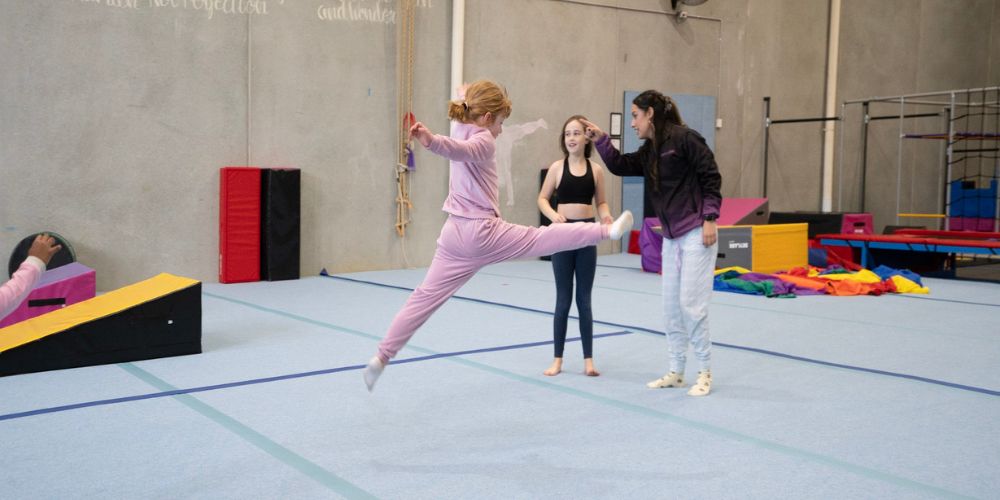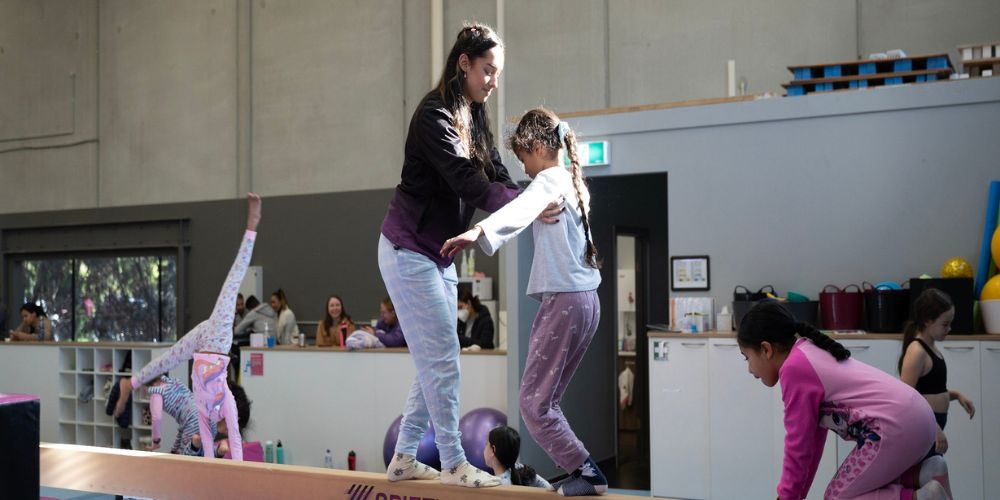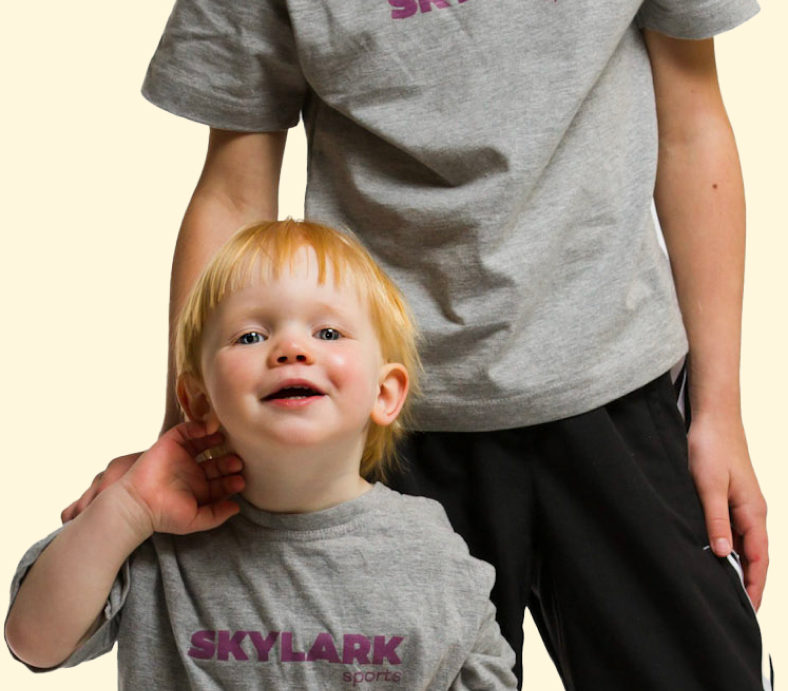Did you know that the first known gymnastics competition took place in 776 BC in ancient Greece? Or that "gymnastics" is derived from the Greek term "gymnazein," which means "to exercise naked"?
While gymnastics tournaments nowadays are a little more modest, the sport has maintained its popularity and attractiveness for children of all ages. As someone who grew up doing gymnastics, I can speak to the numerous advantages this it may give your kids.
In this article, we'll discuss why kids should try gymnastics classes and how it may help them build physical strength, emotional resilience, and long-lasting relationships with others.

What is Gymnastics for Kids?
Gymnastics is a sport that combines physical activity with demonstrations of strength, balance, coordination, and flexibility through a variety of exercises and routines. It is distinct from other sports in that it incorporates aspects of acrobatics, dance, and performance while emphasising the development of core motor abilities that can be applied to other activities.
Gymnastics is divided into various events or disciplines, each with its abilities. These include:
- Artistic gymnastics covers both men's and women's events and is the most well-known and popular type. The devices used in artistic gymnastics include floor exercises, balancing beam, uneven bars, and vaults. Depending on their interests and talents, children might specialise in one or more of these devices.
- Rhythmic gymnastics incorporates aspects of ballet, dance, and prop manipulation (such as ribbons, balls, hoops, and clubs). It is a female-only sport focusing on flexibility, elegance, and synchronisation.
- Trampoline gymnastics is the performance of aerial stunts and leaps on a trampoline. It may be done alone or as a team, comprising events like an individual trampoline, synchronised trampoline, and double mini-trampoline.
- Tumbling and acrobatics entail flipping, twisting, and jumping on a mat or springboard. It is frequently used in cheerleading routines to emphasise strength, power, and accuracy.
How Does Gymnastics Benefit Kids?
Physical Benefits
Gymnastics is a physically demanding exercise that may benefit children such as increased strength, flexibility, balance, and coordination. These advantages can assist children in excelling not just in gymnastics but also in other sports and activities.
- Strength: Gymnastics demands children to build strong muscles throughout their bodies, especially in their arms, legs, and core. Pull-ups, push-ups, and handstands can help children enhance their upper-body strength. In contrast, squats, lunges, and leaps can help them develop lower body strength.
- Flexibility: Flexibility is an essential aspect of gymnastics. Many techniques require children to stretch and bend their bodies in ways that may be painful or challenging at first. Stretching and flexibility activities can help children enhance their range of motion.
- Balance: Many techniques in gymnastics require children to sustain their body weight on one foot or hand while performing a movement or transition. Balance exercises on one foot or a balance beam can help children improve their balance and stability.
- Coordination: Gymnastics necessitates precise movements and cooperation between various body components. Cartwheels, round-offs, and aerials require children to coordinate their arms, legs, and core to act correctly.
Mental Benefits
Gymnastics may provide numerous mental advantages to children, in addition to physical ones, such as enhanced self-confidence and self-esteem, the development of a growth mentality, and improved attention and stress management abilities.
- Self-esteem and self-confidence: Gymnastics may help children gain confidence in their physical talents by teaching and mastering new skills. Performing in front of an audience or a judge may also aid in developing self-esteem and self-assurance in children. Working with coaches and teammates may also help youngsters learn to speak effectively and collaborate, which can increase their confidence and social skills.
- Setting goals and sticking to them: Gymnastics demands children to create personal objectives and work hard to accomplish them. As students go through the sport, they learn to set progressively difficult objectives and to persevere in the face of failures and adversity. This can help youngsters develop a growth mentality, in which they learn to see failures and mistakes as chances for learning and progress.
- Concentration and stress management: Gymnastics involves excellent concentration and focus, which might enhance children's ability to remain on task and manage distractions in other aspects of their lives. Gymnastics' physical challenges can help youngsters manage stress and anxiety by generating endorphins and fostering calm.
Social Benefits
Gymnastics may also provide children with several social advantages, such as opportunities for socialisation and collaboration, as well as training in communication and the ability to resolve conflicts.
- Socialisation and collaboration: Gymnastics is an excellent method for youngsters to make new friends and form bonds with other children who share their interests. Working together to practise routines and prepare for contests with teammates may help children build a feeling of friendship and collaboration. Gymnastics also offer children a sense of belonging to a more extensive community of gymnasts and supporters.
- Conflict resolution and communication: Gymnastics requires clear communication between coaches, athletes, and teammates. Kids may learn how to communicate effectively, offer and accept criticism, and settle disagreements constructively by working together to achieve a common objective. These abilities may be used in gymnastics and other events in their lives, such as school and family connections.
- Sense of belonging and community: Gymnastics may help youngsters develop a feeling of community and belonging, particularly when participating as part of a team or attending gymnastics competitions as fans. Children can gain a sense of pride and connection to something greater than themselves by becoming a part of a wider community of gymnasts and supporters.

What Age Should a Child Starts Gymnastics?
We are often asked, when is the perfect age for my kids to start learning gymnastics?
Children who desire to participate in gymnastics should have the required physical, emotional, and social abilities. Motor skills, balance, coordination, attention span, emotional maturity, and a readiness to follow directions and collaborate are all examples.
Although the age at which a kid is ready to begin gymnastics varies, children as young as 18 months can begin gymnastics programmes tailored to their age group. Most programmes recommend that children begin between the ages of three and five when they can follow directions and have more control over their bodies.
It is critical to pick a programme that matches a child's talents and interests. Kids should concentrate on basic movement abilities and motor development, whilst older children may benefit from more advanced teaching and training.
How To Kick Start Your Kids With Gymnastics?
Here are some basic ways to get your kids started in gymnastics:
- Conduct some research: Look for gymnastics facilities in your place and read parent reviews to select one that is safe, reliable, and provides programmes appropriate for your child's age and ability level.
- Set up a trial class: Many gymnastics facilities provide trial courses for your child to check out the activity and see whether they like it. This is an excellent way to get your child started in gymnastics without committing to a complete programme.
- Encourage your kids: Inform your youngster that you appreciate their enthusiasm for gymnastics and urge them to do their best. Remember that gymnastics may be complicated, and it's critical for your child to feel supported and encouraged.
- Check that they have the necessary equipment: Gymnastics requires comfortable, tailored attire for a complete range of motion. As kids grow in the sport, they may require grips, leotards, and other specialised equipment.
- Stay involved: Attend your child's gymnastics sessions and competitions to demonstrate your support and involvement in their development. Enquire their coaches for comments and suggestions on how to assist your youngster in developing.
Frequently Asked Questions
How frequently should my child take gymnastics lessons?
This depends on the child's age, ability level, and area of interest. For beginners, one or two courses each week is usually plenty. Youngsters may decide to expand their training time as they advance in the sport.
How should my child dress for gymnastics?
Your youngster should wear comfortable clothes and allow for a complete range of motion. Leotards, shorts, and T-shirts are all acceptable choices. Gymnastics does not usually need the wearing of shoes. However, certain facilities may demand socks or specialised gymnastics shoes.
What skills will my child acquire through gymnastics?
Gymnastics develops a wide range of physical abilities, such as strength, flexibility, balance, and coordination. Children will also learn discipline, goal-setting, and persistence.
Is gymnastics safe for my child?
Gymnastics is a safe activity for children when taught and practised appropriately. Selecting a reputable facility with competent coaches that places safety first is critical.
Conclusion
Gymnastics may give children several physical, mental, and social benefits. It may help kids gain strength, flexibility, balance, and coordination and raise their self-esteem and confidence. It can also teach them discipline and persistence and encourage collaboration and communication skills.
To start your child in gymnastics, seek a respected programme that matches their talents and interests. Examine nearby gymnastics facilities, get advice from other parents, and don't hesitate to try a few alternatives to discover the perfect match for your child. Your youngster may succeed in the fascinating gymnastics world with commitment and hard effort!

